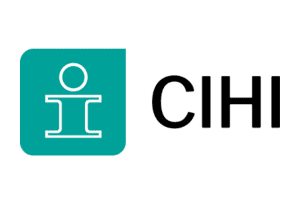Meeting the person in the patient through digital health

Although digital health has been part of our health system for decades, its widespread adoption during the pandemic led to considerable research and innovation that has helped us to understand its effectiveness and efficiency more deeply.
Differences have been noted when considering the patient, provider, or systemic perspective. As a patient partner over the last seven years, my own viewpoint has varied depending on the nature of the health issue and the relationship with the provider. The opportunity to connect virtually with my primary care provider, whom I have known for many years, brings the benefits described in the literature including convenience, time, and cost savings for both of us. For me and many of the patients with whom I collaborate, there is often unease in first appointments with new providers and specialists—people who typically have only the basic medical data about us. The presence of a relationship with one’s provider, however brief, can instill a sense of trust and confidence that the provider is aware of who I am as a person and factors that may affect my health.
The focus on people-centred care in our health system, which is gradually replacing the more limited concept of client/family/caregiver or relationship-centred care, is built upon the patient and their caregivers being integral members of the healthcare team. As a ‘patient surveyor in training’ with Accreditation Canada, I am encouraged by their creation of the world’s first Integrated People-Centred Care Standard, introduced in 2021 along with resources to support its adoption and implementation.
So—how to bring a patient’s voice and story to their interactions and collaboration with their healthcare team? It requires more than access to one’s own EMR. One proposal that I strongly endorse is the inclusion of the patient’s story—personal information which may have a significant impact on their health, decision-making and goals—into their health record. The presence of a patient-generated profile, a one page biography if you like, as an additional tab in the EMR would enable all team members to learn relevant information about the person in a few moments without repeated background questions at each appointment, often a tedious process for both patient and provider. Two pilot research projects offer guidance.
One is a landing page for inpatients at the Centre for Addiction & Mental Health in Toronto called This Is ME, co-created by the patient and one member of the care team. It is a glimpse into the person’s interests, roles, hopes and goals and can include specific information such as triggers and coping practices.
The second was piloted in the ICU of Johns Hopkins Hospital during the pandemic. Many of the patients at that time were intubated and often lying prone, unable to speak or have face to face contact with staff. The chaplain contacted family members to record tidbits of the patient’s story, which she formatted into a two minute audiotape and uploaded to the EMR. Two minutes to learn details of a patient’s personal life during team rounds or to listen to as clinical notes are recorded.
Both examples are e-health innovations based on compassion and people-centred care. It is my belief that the added benefit to the patient and their team offsets the additional work required for its implementation. E-health inspires me to advocate for the inclusion of the patient’s story in their health record for the benefit of all and my hand is raised as a patient partner ready to help.
References
- Announcement: Health Standard Organization (HSO) introduces world’s first co-designed, evidence-based standard on integrated people-centred care (Link to International Foundation of Integrated Care site)
- Standard: CAN/HSO 76000:2021 – Integrated People-Centred Health Systems (Link to HSO site)
- Paper: “This Is ME”: Promoting Person-Centred Care within the Digital Health Environment (Link to Longwoods Healthcare Quarterly)
- Video clip 1: How TIMS is helping care teams connect with patients who often can’t speak for themselves (Link to YouTube)
- Video clip 2: How TIMS is helping care teams connect with patients who often can’t speak for themselves (Link to YouTube)
- News article: Family Audio Recordings Help Humanize COVID-19 ICU Patients for Medical Staff (Link to CME Medpage Today site)
- Article: Whole Health – My Life, My Story (Link to US Department of Veterans Affairs site)




